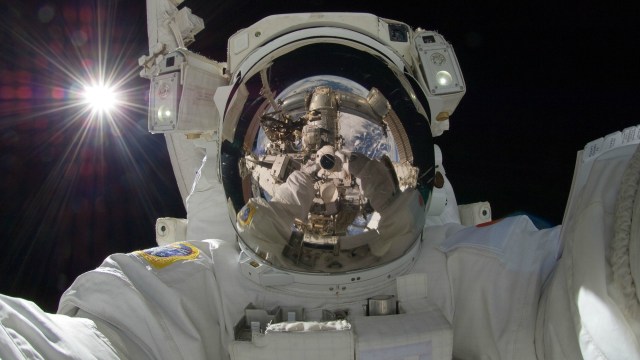Ask Ethan: Will Future Civilizations Miss The Big Bang?
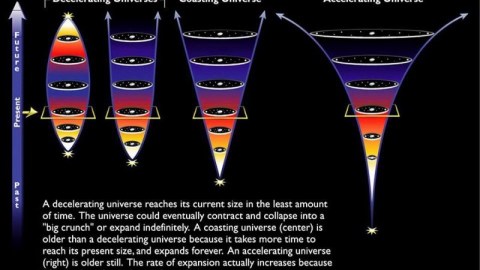
And if their conclusions will be different from ours, how can we be certain we’ve got it right?
One of the greatest dangers in all of science is jumping to false conclusions based on the limited data we have in our hands. We can never observe everything to arbitrary precision, so we’re always forced to extrapolate based only on what we do see. But what if the critical information that would lead us to the correct conclusion is exactly what we’re missing? This will be the case billions of years from now, when it comes to the Big Bang, and that frightening realization has led to a profound question from B. G. Buehler, who wants to know:
If intelligent life re-emerges in our solar system in a few billion years, only a few points of light will still be visible in the sky. What kind of theory of the universe will those beings concoct? It is almost certain to be wrong. Why do we think that what we can view now can lead us to a “correct” theory when a few billion years before us, things might have looked completely different?
Let’s talk about what someone in the far future, say, tens of billions of years from now, would see.
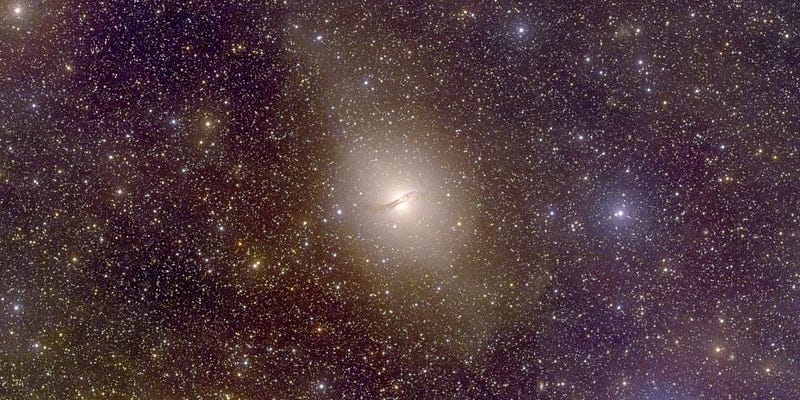
There would still be hundreds of billions of stars in the sky, all accessible to whatever intelligent lifeforms arose with telescopes of the same caliber we have today. Some details would be different, however:
- there would be less dust and neutral gas,
- there would be a greater proportion of older, redder, lower-mass stars,
- there would be far fewer regions of active star formation,
- and the stars would be distributed in a big elliptical halo, rather than in a Milky Way-like plane.
The main reason for all of this is that, over a time period spanning 4-to-7 billion years from now, the Milky Way and Andromeda, and eventually all of the local group galaxies, will merge together into one.
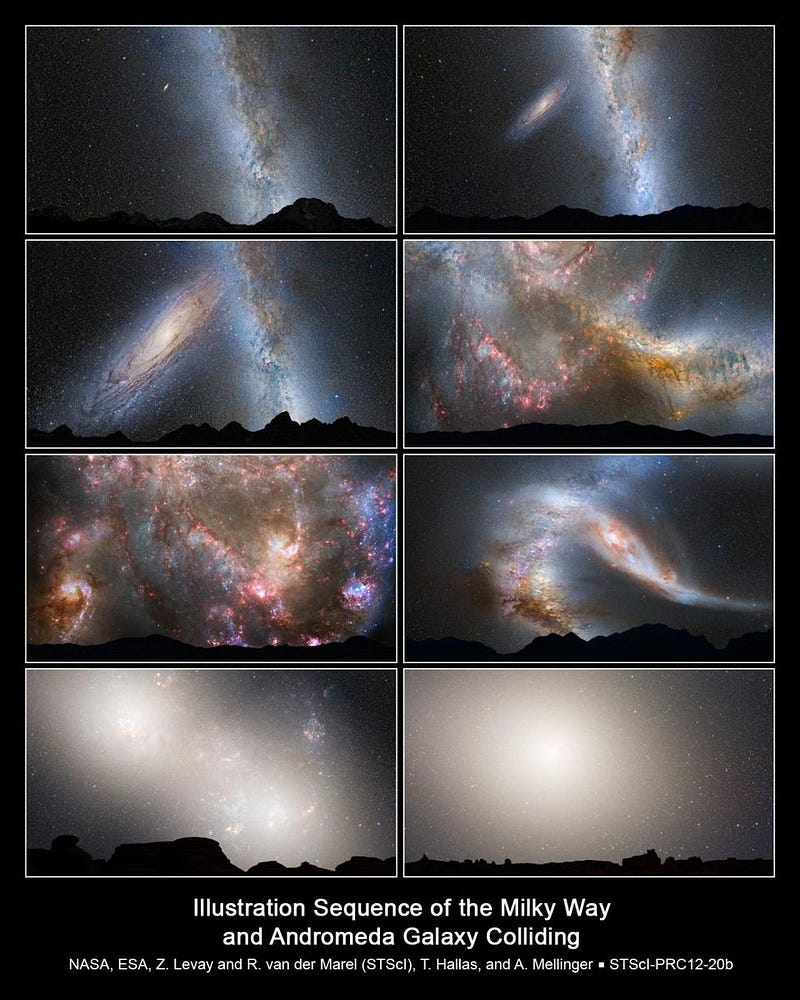
When major mergers like this occur, enormous amounts of new star formation occur, using up most of the gas and dust present within a galaxy. When a small region of very active star formation exists, we say there is a starburst occurring. When that region encompasses an entire galaxy, we label the entire thing a starburst galaxy. Very rapidly, those neutral atoms collapse to form new stars everywhere, but the most massive ones are very short-lived. After only a few hundred million years, the more massive ones are all gone, leaving only Sun-like stars and the less massive ones around. By the time tens of billions of additional years have gone by, only the cooler, redder stars will remain. They may be dimmer, but there will be less dust to block their light in all directions.
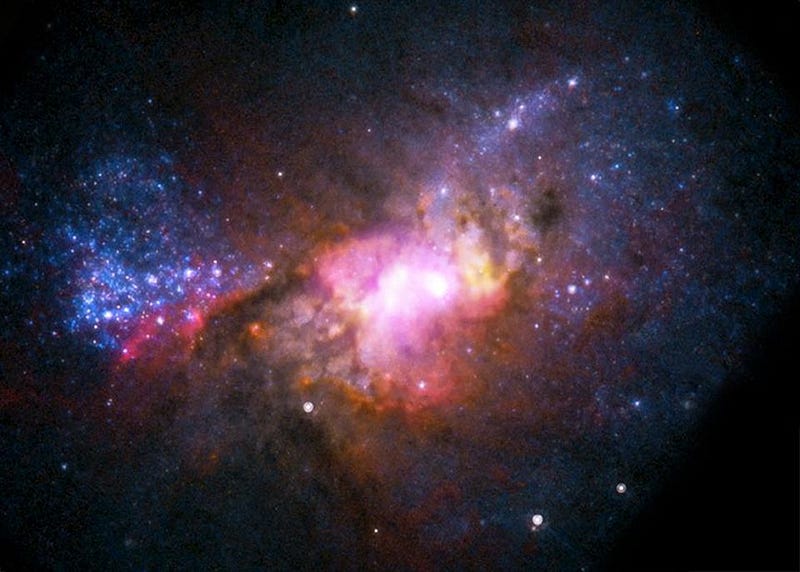
But that’s only for stars within what our own galaxy (and local group) will become: the future giant elliptical known as Milkdromeda. If a far-future civilization were to look beyond our own future-galaxy, they’d see… nothing. As the Universe continues on into the future, all the galaxies that aren’t part of our local group will accelerate away from us, owing to the presence of dark energy. Right now, those closest galaxies are around 10 million light years away, but the Universe is accelerating. When the Universe is double its age, those galaxies will be twice as far away; when it’s three times its present age, they’ll be four times as far away; at four times its age, they’ll be eight times as far away, and so on. By time the Universe is an age of 100 billion years or so, the nearest galaxy to us will be about a billion light years away. The accelerated expansion of the Universe will make us appear that we’re alone in the cosmos.
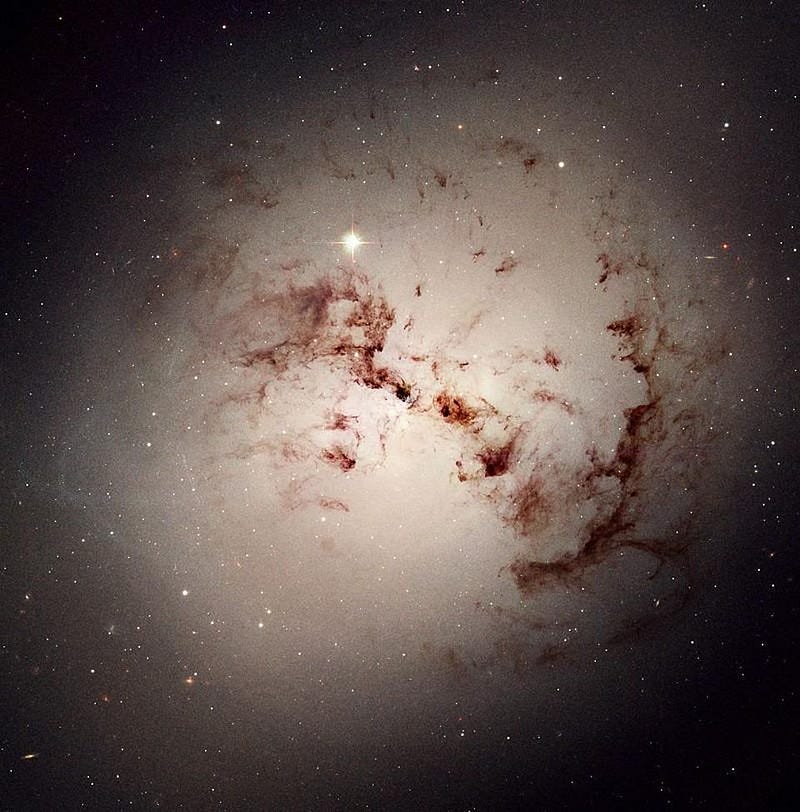
There also won’t be any signature of the cosmic microwave background at all. Today, there are hundreds of leftover photons per cubic centimeter at just a few degrees above absolute zero, placing it in the microwave portion of the spectrum. As the Universe expands, both the density and the energy of these photons will drop. After 100 billion years, there will be less than one photon per cubic centimeter, and the cosmic background won’t be in the microwave at all, but only far in the distant radio portion of the spectrum. Unless someone had an idea that the ultra-distant galaxies and this ultra-distant, faint radio background would be there, a far-future civilization would never uncover the Big Bang.
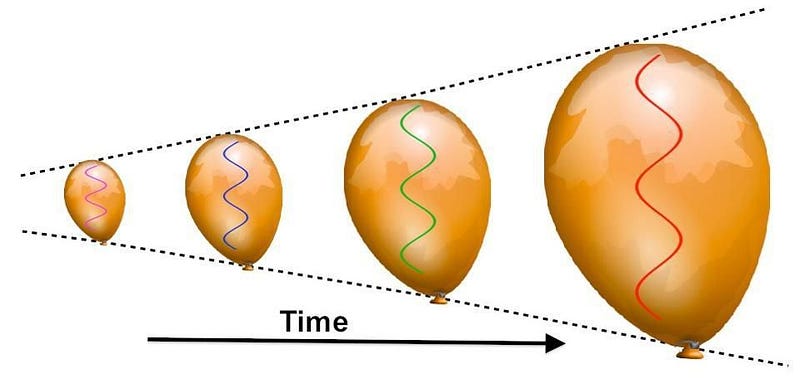
Instead, they would conclude that their galaxy represented the full extent of the entire Universe. That all around them, for as far as they could see, there was nothing else around: only them. Without any nearby clues for what else is out there, there would be no impetus to search out to the great, unexplored distances to look for the ultra-remote galaxies that would now be the nearest ones to our own. There would be no motive to assume the existence of a cosmic afterglow from the Big Bang, since the expanding Universe would go unnoticed. All we would have was our own galaxy, Milkdromeda, extending for a couple of hundred thousand light years. They might discover dark matter within their own galaxy, but that’s it. Unless they stumbled upon ultra-distant, ultra-faint signatures from the distant Universe, they might even believe in the steady-state hypothesis.
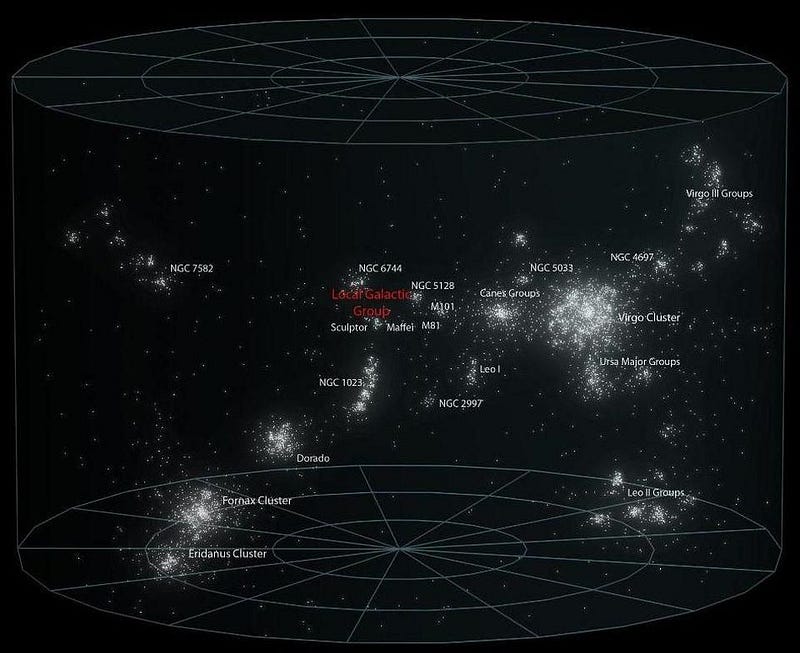
They would ask questions such as where did their galaxy come from? Why are they the only one? Where did the material to form these long-lived stars come from? Why are there so few young, blue stars? Without the evidence for an expanding Universe, the Big Bang, or distant objects beyond the Milky Way, they would certainly draw the wrong conclusions for centuries, if not all of eternity. After countless lifetimes of searching the deepest abysses of the Universe and finding nothing, they would be forced to conclude it was just them. Just their galaxy; just their stars; just them. All alone in an infinite abyss of dark loneliness.
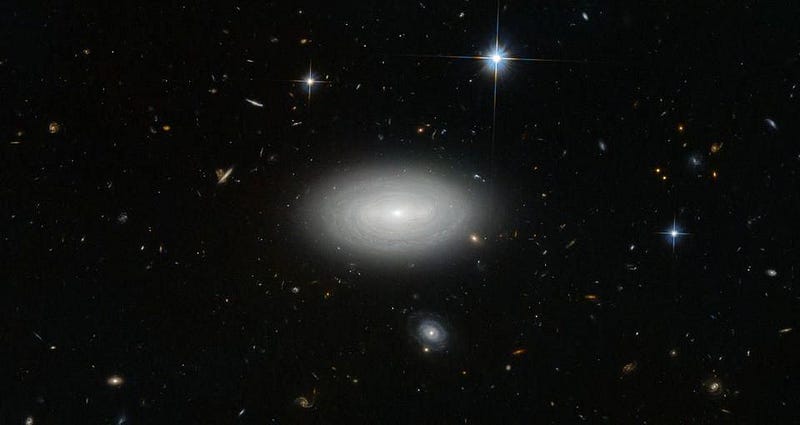
We are privileged to have made it as far as we have, both evolutionarily and also technologically, when the Universe is still so young. We live, today, at a time where nearby galaxies have shown us the expanding Universe, cluing us into the fact that we should look for signatures from when the Universe was smaller, denser, and hotter. We’ve found very robust signatures of this, both nearby and far away, and we knew to look to great cosmic distances because of what we saw nearby. But if we had seen nothing? If we thought our galaxy was all there was? There would be no motivation to look farther. In the distant future, a civilization would need to look hundreds or even thousands of times as far to see even the closest objects beyond our galaxy.
What we conclude about what our Universe is and where it comes from is dependent on when we come into existence.
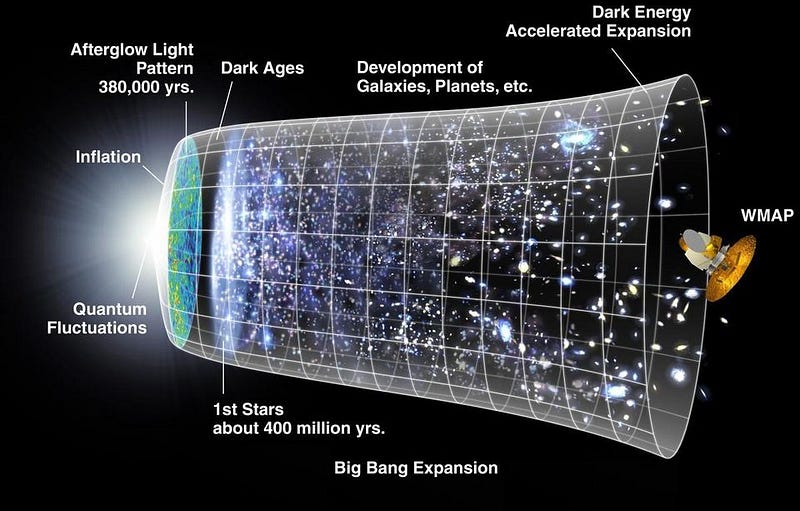
Does it make you wonder, as it made B. G. Buehler wonder, whether there are important components or properties to the Universe that have already been lost? We assume that the Universe is made of normal matter, radiation, dark matter, neutrinos, black holes, and dark energy, and little else. But if we look to earlier times, we know that neutrinos and radiation were far more important than they are today, and that dark energy didn’t reveal itself at a detectable level until the Universe was already billions of years old. Could there have been other types of energy present in the Universe that fell away faster than radiation did, and we don’t know about their existence because we don’t have any evidence for them?
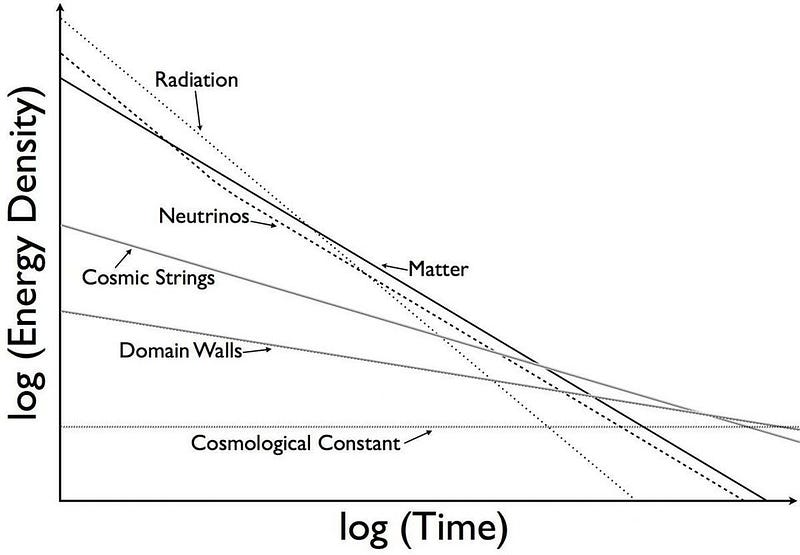
All we can do, at present, is place constraints on that from the evidence we do see. And, realistically, those constraints aren’t very good. We see enough of the Universe to robustly conclude that the Big Bang is correct, and that the Universe ought to have had an inflationary origin that set up and gave rise to the Big Bang. But beyond that, there could have been other components to the Universe that actually did play a major role in the distant past, and those signs no longer exist today. Scientists spend very little time focusing on this possibility, because what we theorize works so well to reproduce what we see. But this would be the case in the far future, too: assuming a steady-state Universe that existed, unchanged, for tens of billions of years would work extremely well.
It’s a sobering reminder that as well as our scientific theories work, they are always subject to revision, and that we must never stop looking for cracks in them. It is always at the fringes of what’s measurable and observable that we find the newest ways forward. Without probing to ever-greater horizons, from the subatomic to the cosmic, we’ll never uncover the deepest truths about the Universe. We’ve learned an awful lot, but like many scientists, I have a feeling that there’s an awful lot farther to go. It will take humility, and possibly searching even in seemingly unlikely places, in order to get there.
Send in your Ask Ethan questions to startswithabang at gmail dot com!
Ethan Siegel is the author of Beyond the Galaxy and Treknology. You can pre-order his third book, currently in development: the Encyclopaedia Cosmologica.




